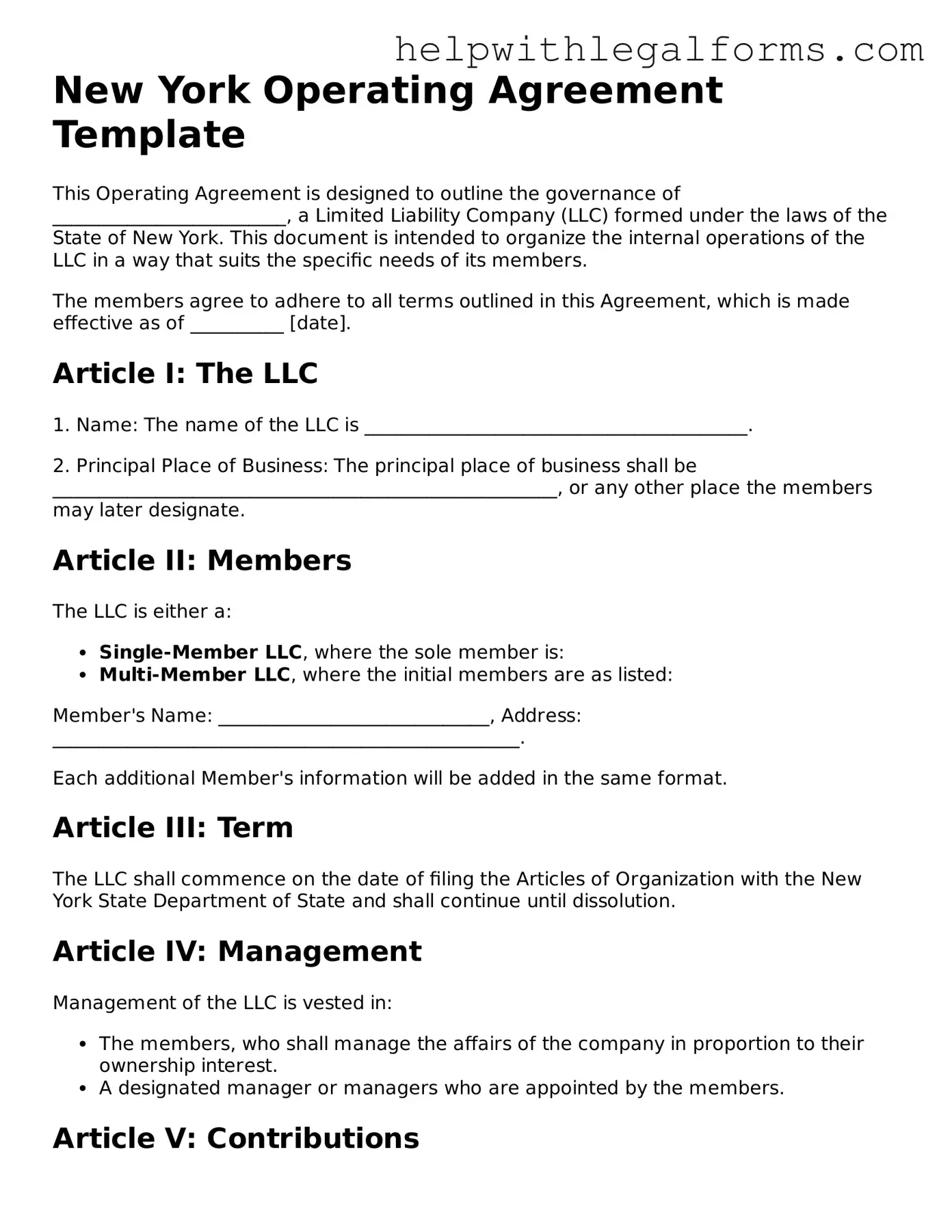New York Operating Agreement Template
This Operating Agreement is designed to outline the governance of _________________________, a Limited Liability Company (LLC) formed under the laws of the State of New York. This document is intended to organize the internal operations of the LLC in a way that suits the specific needs of its members.
The members agree to adhere to all terms outlined in this Agreement, which is made effective as of __________ [date].
Article I: The LLC
1. Name: The name of the LLC is _________________________________________.
2. Principal Place of Business: The principal place of business shall be ______________________________________________________, or any other place the members may later designate.
Article II: Members
The LLC is either a:
- Single-Member LLC, where the sole member is:
- Multi-Member LLC, where the initial members are as listed:
Member's Name: _____________________________, Address: __________________________________________________.
Each additional Member's information will be added in the same format.
Article III: Term
The LLC shall commence on the date of filing the Articles of Organization with the New York State Department of State and shall continue until dissolution.
Article IV: Management
Management of the LLC is vested in:
- The members, who shall manage the affairs of the company in proportion to their ownership interest.
- A designated manager or managers who are appointed by the members.
Article V: Contributions
Each member’s contribution to the LLC’s capital is as follows:
Member's Name: _____________________________, Contribution: $_________________.
Further contributions shall be determined according to the procedure outlined by the members.
Article VI: Distributions
Profits and losses shall be allocated, and distributions made to the members as follows:
- According to the percentage of each member's ownership interest in the LLC.
- Any other method agreed upon by the members and documented in writing.
Article VII: Changes to the Operating Agreement
Any changes to this Operating Agreement must be agreed upon by all members in writing.
Article VIII: Dissolution
The LLC may be dissolved upon the agreement of the members as governed by New York state law.
IN WITNESS WHEREOF, the undersigned members have executed this Operating Agreement as of the last date written below.
Member's Name: _____________________________, Signature: _____________________________, Date: __________.
Member's Name: _____________________________, Signature: _____________________________, Date: __________.
